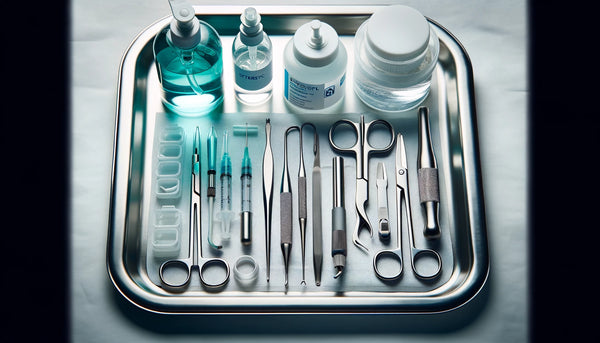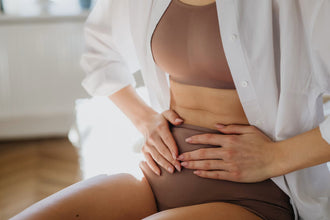
How Infections Can Complicate Healing and Lead to Scarring
Wound healing is a complex and dynamic process, integral to maintaining the integrity of the skin after injury. However, this process can be significantly disrupted by the presence of infections, leading not only to delayed healing but also to increased risks of scarring.
Understanding the mechanisms through which infections affect wound healing and the subsequent formation of scars is crucial for developing effective strategies for wound care and management.
This article delves into the impact of infections on the healing process, common pathogens involved, strategies for prevention and treatment, and the pivotal role of healthcare professionals in managing wound infections.
The natural process of wound healing is divided into three distinct phases
The natural process of wound healing is a meticulously orchestrated event, designed to restore the integrity of damaged skin. However, when infections invade a wound, they can throw this delicate balance into disarray, complicating the healing process and increasing the likelihood of scarring.

Effects of Infections Across Healing Stages
Infections can introduce a myriad of complications across all stages of wound healing:
- Inflammatory Phase: Infections can extend the duration of inflammation, preventing the wound from progressing efficiently to the next phase.
- Proliferative Phase: The presence of pathogens can contaminate newly formed tissues, impacting the quality of granulation tissue and compromising the newly formed skin's structure.
- Maturation Phase: Infections disrupt collagen remodeling and scar maturation, often resulting in scars that are more pronounced and less aesthetically pleasing.
| Healing Stage | Impact of Infection | Consequences |
|---|---|---|
| Inflammatory Phase | Infections can extend the duration of inflammation, leading to prolonged redness, swelling, and pain. | Delays the healing process, increases the risk of further complications. |
| Proliferative Phase | Pathogens interfere with the formation of granulation tissue, potentially introducing bacteria into new tissues. | Compromises the strength and quality of new tissue, leading to weak repair and increased scarring. |
| Maturation Phase | Infections disrupt the final remodeling of the wound, affecting collagen alignment and scar tissue formation. | Results in scars that are more pronounced, rigid, and aesthetically displeasing. |
Bacterial Infections: Bacteria like Staphylococcus aureus are common culprits in wound infections
Wounds can become breeding grounds for various pathogens, including bacteria, viruses, and fungi, each capable of complicating the healing process.
Understanding these pathogens and their impact on wound healing is essential for effective management and treatment.
| Pathogen Type | Examples | Effects on Wound Healing | Management Strategies |
|---|---|---|---|
| Bacterial | Staphylococcus aureus, Pseudomonas aeruginosa | Can cause significant delays in healing, leading to infected, non-healing wounds. | Antibiotic treatment, maintaining wound hygiene, and using antibacterial dressings. |
| Viral | Herpes simplex virus | May lead to recurrent wound infections, slowing the healing process. | Antiviral medications, keeping the wound clean and covered. |
| Fungal | Candida species | Can result in chronic wound infections, especially in immunocompromised patients. | Antifungal treatments, controlling the wound environment to prevent fungal growth. |
Strategies to Prevent Infection and Minimize Scarring
Effective wound care is pivotal in preventing infection and minimizing the risk of scarring. Several strategies can be employed to achieve this goal:
- Proper Wound Cleaning: Immediate and thorough cleaning of wounds is crucial for preventing infection.

- Regular Dressing Changes: Clean, appropriate dressings protect the wound from contamination and maintain an optimal healing environment.
- Monitoring for Signs of Infection: Early detection of infection signs can facilitate timely intervention, mitigating complications.
In cases where infections develop, treatments such as antibiotics, antifungals, or antivirals may be necessary to manage the infection and support the healing process.
The Role of Healthcare Professionals in Managing Wound Infections
Healthcare professionals play a vital role in diagnosing and treating wound infections, ensuring the best possible outcomes for healing and minimizing scarring.
- Accurate Diagnosis: Identifying the specific pathogen responsible for the infection is critical for effective treatment.

- Personalized Wound Care Plans: Tailoring treatment plans to the individual's needs and the wound's characteristics can optimize healing.
- Advanced Wound Care Products: Utilizing products that support the healing environment and combat infection can be beneficial.
Future directions in wound care are promising, with ongoing research into new antimicrobial agents and innovative therapies
Looking forward, the field of wound care is evolving, with research focused on developing new antimicrobial agents and innovative therapies aimed at enhancing wound healing and reducing the incidence of scarring.

Infections present a significant challenge in the wound healing process, complicating recovery and increasing the likelihood of scarring. Through preventive measures, timely treatment, and the expertise of healthcare professionals, the impact of infections on wound healing can be minimized.
As the field of wound care continues to evolve, new treatments and strategies will emerge, offering hope for improved healing outcomes and reduced scarring for those affected by wound infections.
References:
https://www.ncbi.nlm.nih.gov/books/NBK470443/
https://www.ncbi.nlm.nih.gov/pmc/articles/PMC2903966/
https://www.ncbi.nlm.nih.gov/books/NBK441868/
https://www.ncbi.nlm.nih.gov/pmc/articles/PMC4486716/
https://www.ncbi.nlm.nih.gov/books/NBK499956/
https://www.ncbi.nlm.nih.gov/pmc/articles/PMC5547374/
General Disclaimer: All information here is for educational purposes only and is not meant to cure, heal, diagnose nor treat. This information must not be used as a replacement for medical advice, nor can the writer take any responsibility for anyone using the information instead of consulting a healthcare professional. All serious disease needs a physician.















